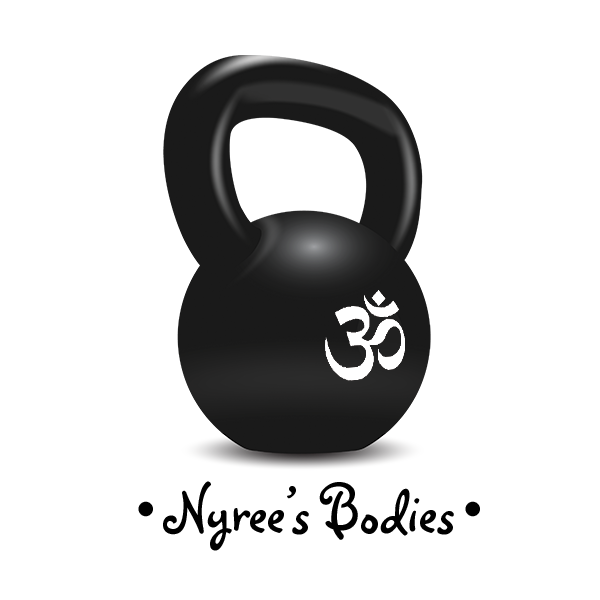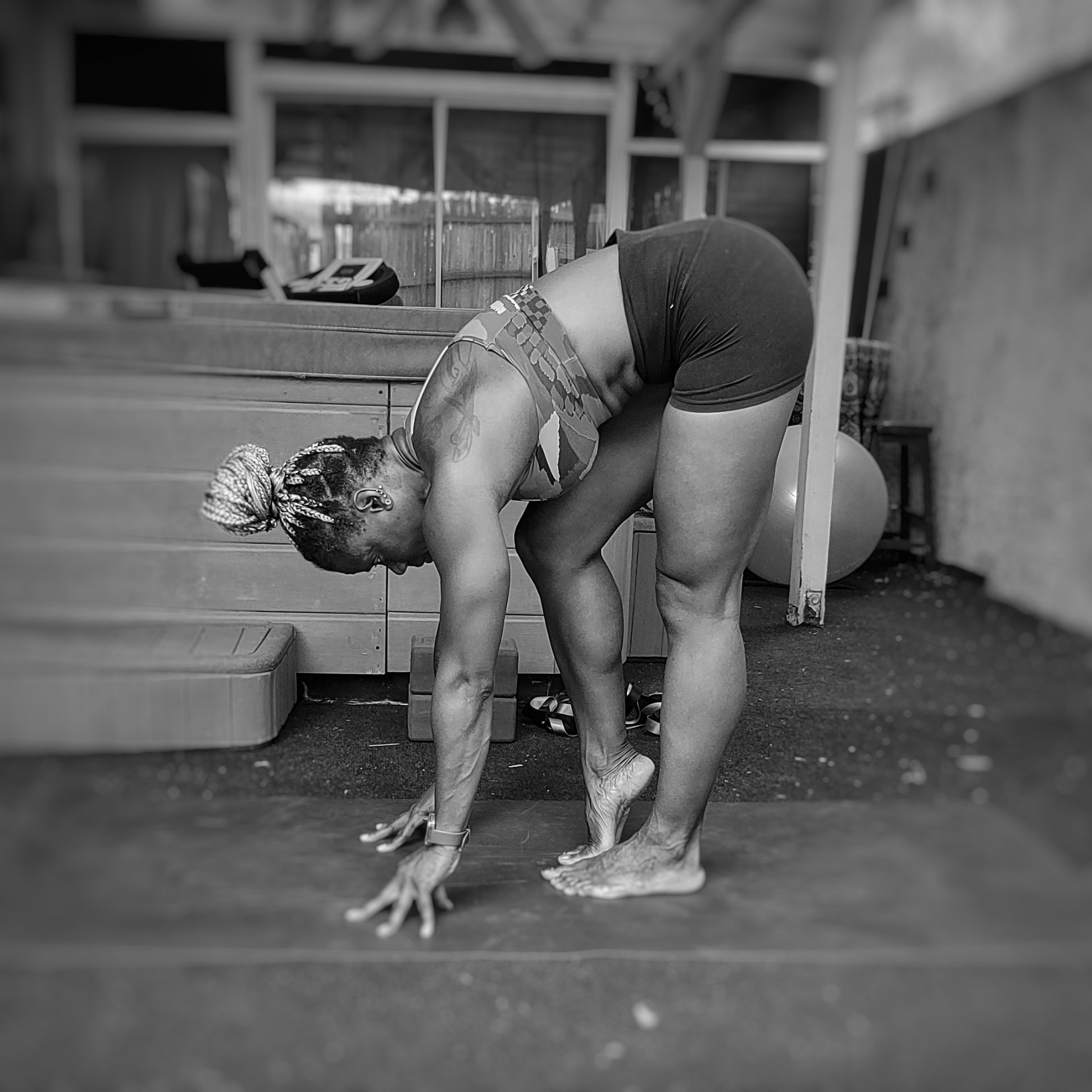Your Custom Text Here
Using Kettlebells during Pregnancy
My 16 week pregnant client mid swing
I’ve been a certified kettlebell instructor for many years and incorporate kettlebells in most training programs and with most clients. This includes using kettlebells when training pre and postnatal clients. As a pre/postnatal certified fitness trainer and a mother, I’m acutely aware of the physical changes that occur during the stages of pregnancy as well as the benefits of exercising while pregnant. I’m often asked whether it’s safe to use kettlebells during pregnancy.
While kettlebell exercises are safe to use with most populations when given proper instruction, my final answer is, depends. There is no one right answer for this question as there is a no one size fits all solution in fitness. However, having an understanding of the pregnant individual’s exercise history is a key part to how I answer. If kettlebells were used previously or up to pregnancy, then using them should not have to stop. However, at some point continued use during the pregnancy may require exercise modification, reducing weight ranges and intensity or removing certain exercises altogether due to contraindications. If the practitioner is a kettlebell novice but exercises or strength trains regularly and has a good certified kettlebell instructor guiding proper use, why not? It should be stressed that kettlebell work is a SKILL based exercise modality that needs to be learned and practiced for safety and effectiveness. Improper use of kettlebells, of which some of the core or foundation exercises are ballistic and explosive movements (swing, clean), can cause injury in done incorrectly. Pregnancy is not the time to stop physical activity (unless the doctor says so) and should be continued in a way that is beneficial to mother and fetus. Once these skills have been learned, working with kettlebells is as safe as other forms of strength training. Keep in mind, this is general advice. Being intuitive, listening to your obstetrician and using common sense should be the ultimate guide in final decision making.
Kettlebell exercises that are ballistic when performed are benefitial to the pregnant practitioner in many ways. The kettlebell, a molded cast-iron ball shaped weight with a handle, differ from standard weight training equipment like dumbbells or barbells are are used to perform exercises that are linear (straight line) such as the goblet squat and curvilinear (curved arc) demonstrated in the swing. Aside from maintaining musculature and strength, the ballistic and curvilinear action of the kettlebell swing creates dynamic strength and stability of the muscles of the spine, back, hips and legs and improves coordination. Development of the musculature of the spine and core area, specifically the core canister comprising the diaphragm, transverse abdominis, the pelvic floor muscles and the multifidus, support the uterus and strengthen muscles that aid in a natural delivery while also combating lower back arching and the associated lower back pain that develops in the later months of pregnancy. Swings also improve cardiovascular conditioning as well as maintaining mobility through the hips and lower body. And that’s just the swing!
Not all kettlebell exercises are ballistic. For instance, the turkish get up improve and develop mobility, coordination, spinal stability, balance and core strength. The goblet squat strengthens the posterior chain (back of the body) and lower body, promotes good posture and maintains functional mobility in the lower body. These abilities become compromised in the later stages of pregnancy where changes in the body due to the growing fetus can reduce mobility, balance, strength and available energy. Marches develop core/spinal stability and cardiovascular conditioning.
Pregnancy is the time to take care of your body and training while pregnant can help during pregnancy as well as with post delivery recovery. If exercising with kettlebells was a part of your lifestyle pre pregnancy, keep going. If starting a kettlebell journey, whether pregnant or not, find a certified kettlebell instructor to begin the journey. Be intuitive, follow the doctor’s recommendations and always use common sense.
Training my pregnant client.
Here’s a quick minimalist kettlebell workout.
Minimalist Workout Program: (Use your preferred weight, 1 kettlebell)
Swings - 10 reps
Goblet Squat - 10 reps
Marches - 10 pair, goblet hold
3 sets
Yoga for our feet: The preservation of foot mobility
Have you ever heard someone say “If your feet hurt, everything hurts.”? I know it can definitely feel that way. But somehow, we don’t often hear or read about maintaining foot mobility and flexibility until they begin to hurt regularly. After a day filled with unplanned walking and not wearing appropriate footwear or training in shoes that were too narrow, wide or didn’t offer the right amount of support, the day ends with some sort of limping home, kicking off those shoes and possibly a foot soak. Just like muscle soreness that occurs a day or two after an unusually intense workout, feet can experience the same sensation. And just like muscle and joint tightness that occurs in the body after that intense workout where we will perform mobility exercises to warm up before the next workout, the same should be said for training our feet. But how many of us actually perform mobility exercises specifically for the feet? I can bet very few do.
Anterior Foot Stretches
1. Sitting on heels with toes pointed. If this is too much on the knees, place a blanket or other cushioning between the knees and seat.
2. Lift knees from the floor, with hands on the floor for support or arms extended forward to add more core involvement. Hold for a few seconds, lower and repeat 3-4 times.
3. With hands on the floor, engage the core, press away from the floor and lift hips with weight resting on the tops of the feet. This is an advanced move. Hold for a few seconds, lower slowly and repeat 3-4 times.
Without being too anatomy heavy, the feet are a complicated interwoven structuring of bones, joints, ligaments, muscles, tendons and fascia designed to create what I like to call “active stability” at our foundation. The structure of our feet allow for movement in all directions, create cushioning for impact and stability for balance among other things. Humans are bipeds (ambulatory on two legs) and though having strong legs is helpful in locomotion, if the feet cannot create a stable base or move freely, any locomotion where the feet are involved will be impaired. Because of the complicated structure of the feet, creating and maintaining its mobility is possibly more of an intricate task. Here, I only address a few stretches that cover the anterior (top or front of foot) and the anterior (bottom or back of foot), in areas of the feet that feel particularly tight in the mornings when getting out of bed, when walking or running or hurt after wearing high heels or narrow foot wear.
Posterior Foot Stretches
1. With toes tucked under, sit on heels. This is an intense stretch for the underside/bottom of the foot. Sit upright with shoulders over the hips. Hold for a few seconds and breath, shift forward and repeat, holding for a longer duration each time. Repeat 3-4 times.
2. With toes tucked under, shift back and lift the knees. Hands can stay on the floor for support or arms up to engage the core to balance. The top of the thigh is parallel to the floor. Repeat 3-4 times holding for a longer duration each time.
3. Folding forward (hands on blocks if hands do not touch the floor), with one leg straight, bend the other knee and role up the the ball of the foot, placing weight on the ball, care full to not roll out to the toe side of the foot. Hold for a few seconds. Switch to the other foot. Repeat 3-4 times each foot, holding for a longer duration each time.
As our bodies age, starting at around middle age (45+ depending on how active you are), mobility begins to reduce making the addition of mobility exercises for all areas of our bodies necessary, not just the usual places such as hamstrings and lower back. Lack of mobility in our feet can change our gait (how we walk) and our stride length (less efficient ambulation). It can also lead to foot pain as well as other parts of the body due to the need to compensate for or adjust other areas from the reduced freedom of movement in the feet. As our literal foundation, performing yoga for our feet is a way to ad longevity and preserve our ability to maintain physically activity and ensure a healthy quality of life .




